News
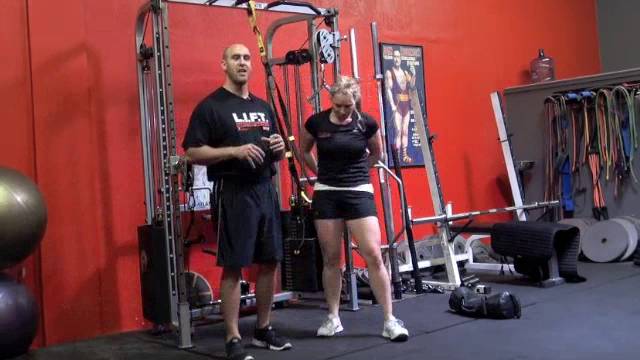
TRX and Sandbag Workout
One of the major mistakes people make in their fitness programs is allowing equipment to dictate the training. While we all enjoy the variety and versatility of various pieces of equipment, our training philosophy and systems should always determine which and why certain pieces of equipment are utilized.
In the case of TRX Training, we have a system of training that is built upon integration of the whole body during every exercise. The progressions of TRX Suspension Trainer drills often requires the stability of the whole body in all planes of motion. So, when we combine the TRX with other implements, we want to integrate tools and philosophies that offer similar not competing concepts. That is why programming the TRX with sandbag training can form a very comprehensive system of fitness.
In utilizing multiple training tools, we need to identify how they can fill in the “holes” of each other and how they can help teach concepts that are complimentary. In the above video, strength and conditioning coach Josh Henkin demonstrates how specific drills using both the TRX and a sandbag can help you reach your fitness goals.
Both the TRX and sandbags are based upon changing stability to enhance strength and perceived load. Manipulating leverage with TRX training may be familiar to many, but we can accomplish the same goal by changing the leverage of both body position and load position with the sandbag. Far too many times people add external load, and this philosophy of multi-planar whole body training gets lost. In order to allow incremental progression and more variables to allow successful progressions, we have far more options that we may first discover.
Options to increasing perceived load include the following:
Change of Speed: While many choose to try to increase speed, greatly decreasing speed may be an avenue of increasing intensity of the movement. As TRX Head of Human Performance Chris Frankel often states, “earn the progression.” This can be demonstrated by being able to display proper movement skills at much lower speeds to enhance control and isometric strength.
Range of Motion: While full range of motion is the desired end result of many movements, we can progressively implement varying ranges of motion to decrease or increase the perceived load.
Complexity: Often an overlooked component of traditional gym exercises, complexity can be a valuable tool for not only increasing the level of difficulty of the drill but the value as well. Exercise complexity can challenge movement in one plane while stabilizing in one or multiple planes of motion. An example lies in both TRX and sandbag training.
During the TRX Alternating Roll Out to Press, force is applied in the sagittal plane while being resisted in the frontal and transverse. In sandbag training, we can create the same training environment by altering the holding position and the stance of the body. Again, these are very complimentary training methods that allow more incremental progression and the ability to determine the right exercise for our clients without getting away from our core philosophy of stability, strength and mobility. See how not the random but deliberate combination of specific methods and equipment can yield higher results and reach new heights of your fitness.
Josh Henkin, CSCS is the creator of the Ultimate Sandbag™ and the Dynamic Variable Resistance Training™ program. His programs have been taught in over 10 countries and are highly sought after. Visit his website at www.DVRTFitness.com.
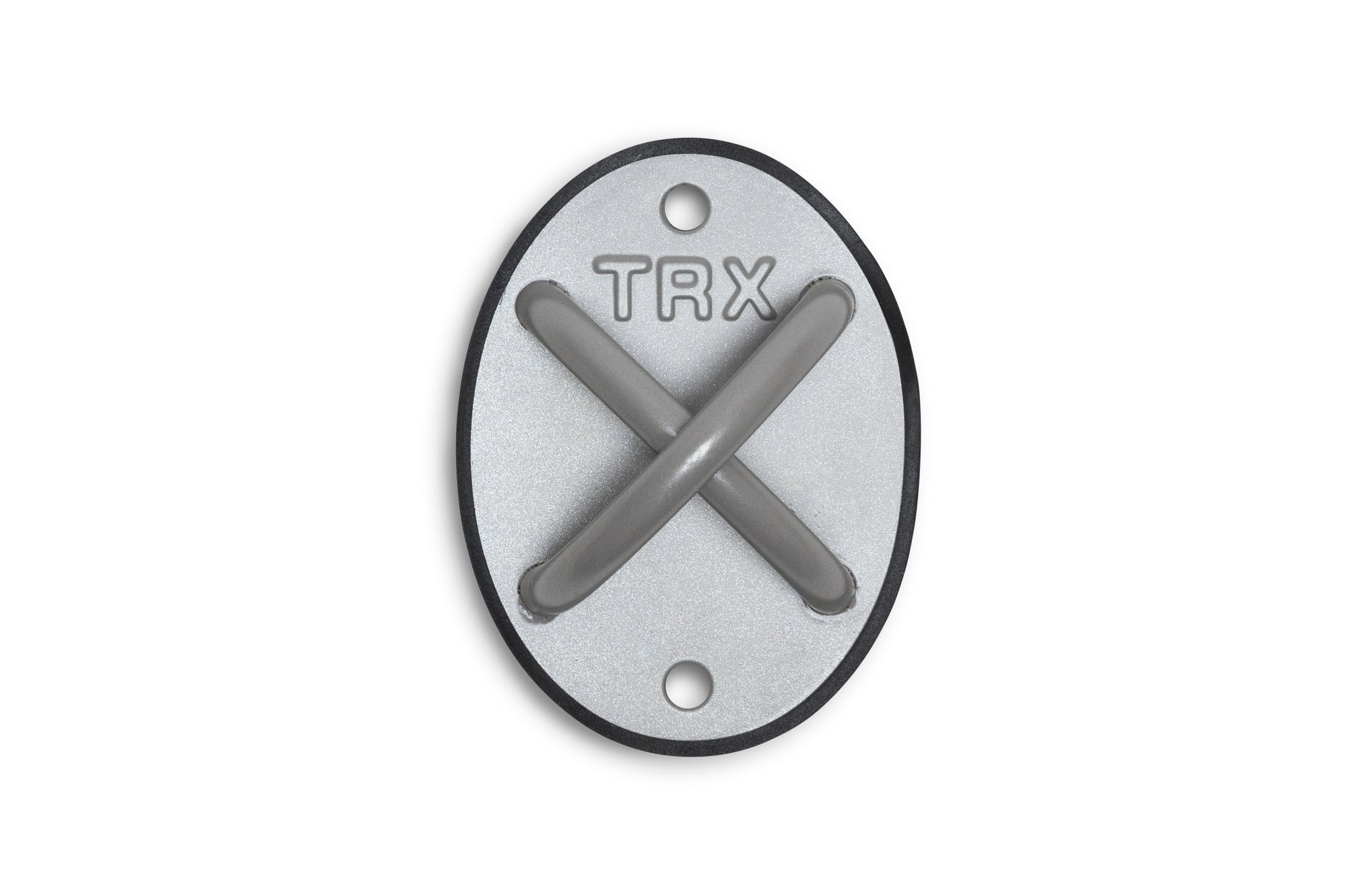
TRX
TRX® Anchors: 6 Ways to Set Up Your Suspension Trainer™
From permanent to semi-permanent to portable, there's a TRX anchor for everyone.

TRX Anchoring Mistake
While ideally your TRX Suspension Trainer should be wrapped around an overhead anchor point several times for a strong, secure hold, we often get calls from people saying this isn't possible in their gym or home, for whatever reason. For example, check out this anchoring "don't" that was recently submitted to us (left, below). This configuration will lead to unnecessary wear and tear on your TRX straps, which could ultimately result in breakage, of either you or your TRX. So our dedicated Customer Service team has come up with a solution. They recommend wrapping the Suspension Anchor strap around the point of attachment at least twice (middle and right, below). This gives redundancy in the clipped anchor point, providing the safest anchoring while ensuring the equalizer loop is still approximately six feet off the ground.
In instances like this, where the facility on the left has a higher than recommended anchor point, it's best if you invest in a TRX Xtender to give you the extra length that will allow you to wrap the Suspension Anchor strap several times around your point of attachment for a strong, secure hold. Not sure about your setup? Take our quick equipment assessment quiz for personalized recommendations on TRX accessories and installation guidance.
TAKE OUR TRAINING QUIZ
Have an anchoring dilemma? We're here to help! Give our Customer Service team a call today at 888-878-5348 or you can email them at customerservice@trxtraining.com.
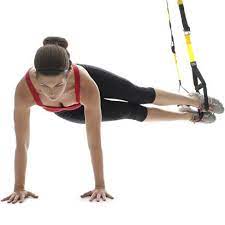
TRX
TRX Ab Challenge Workout
In this workout, TRX Master Trainer Jonathan Ross takes a three-dimensional, multiplanar approach to core training. Ross combines a blend of traditional and original TRX exercises that manipulate stability and movement to challenge your core. These exercises require you to remain braced and in control while manipulating your stability. While there may be a significant amount of movement in your extremities, engage your core to maintain control. The Challenge:
Perform these six exercises in succession, taking a 20-second rest between each movement. (Want to find the perfect exercise sequence and rest periods for your fitness level? Our quick assessment quiz can create a personalized workout timing strategy just for you!) This carefully structured format helps maintain an effective balance between intensity and recovery.
TAKE OUR TRAINING QUIZ
TRX Side Plank with Rotation (10 reps per side)
TRX Pendulum Mt. Climber (45 seconds)
TRX Elevated Pull Through (45 seconds)
TRX Side Plank with Knee Tuck (20 reps per side)
TRX Pendulum Pike (10 reps per side)
TRX Assisted Roll-up (15 reps)
If you want more, rest for two minutes and give it another go.
You can also incorporate other movements into this. Find some for yourself in our TRX exercises YouTube video:
Use our TRX gear below to help you.
TRX® PRO4 SYSTEM
BUY NOW
TRX® RIP TRAINER
BUY NOW
TRX® SRENGTH BANDS
BUY NOW
You can also find other TRX ab exercises like the ones above on our TRX Training Club dashboard. Try it for free today:
Jonathan Ross (www.AionFitness.com) is a TRX Master Trainer and the 2010 IDEA Personal Trainer of the Year. His “800 pounds of parents” directly inspired his prolific fitness career. He lost his father to obesity at over 400 pounds, then helped his mother lose 170 pounds. He is host of the Discovery Health series, “Everyday Fitness” and the author of Abs Revealed, which offers a modern, intelligent approach to abdominal training.
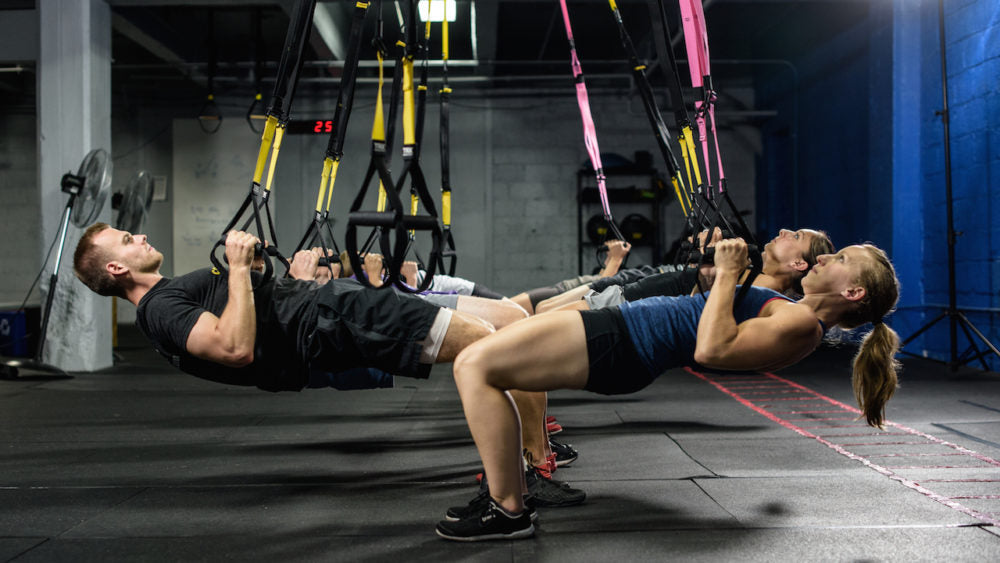
TRX 5x5 Workout Sequence
TRX Education Manager Steve Katai is back with another awesome TRX fitness challenge. This is a great workout if you're short on time and want a strength focus blast (upper body) in under 10 minutes. Want to make sure this challenge matches your fitness level? Take our quick assessment quiz to get personalized modifications and progressions that will help you get the most out of this workout. BONUS: By keeping the TRX Suspension Trainer in single handle mode at mid length, you can roll from exercise to exercise without rest to get a nice cardio benefit. Perform five reps of each of the following five exercises (alternating between right and left sides). Rest as needed. Repeat as desired.
TAKE OUR TRAINING QUIZ
1. TRX Single Arm PressStand facing away, find your challenging angle, wide base, right arm eccentrically bends as left touches the ground, pause and press returning to starting position.
2. TRX Pull/PressStand facing away, find angle, right hand extended out with left hand resting/overlapping right, slowly twist down to face anchor, then drive body back to starting position by pulling, twisting, and then pressing out.
3. TRX Triceps Press/PullStand facing away, find angle, right hand on handle, left resting on top, lower by bending elbows, press up and finish with pull/chest squeeze to right side (dominate hand takes majority of load, then switch sides).
4. TRX Single Arm Speed Skater w/Biceps CurlStand facing sideways, find angle, right leg planted, left leg lifted, drop down into crossing single leg squat, drive back up and then perform single-arm bicep curl.
5. TRX Single Arm Deltoid RaiseStand facing, find your angle, wide base, right arm extending in water ski position, pull body up using right arm into half “Y” deltoid raise.
Steve Katai was introduced to the world of triathlon when he won the Degree "Everyman Ironman" contest in 2003. Five months later, he successfully finished the 2003 Ironman Florida race in less than 13 hours. Now a four-time Ironman triathlete and co-author of The Complete Idiot’s Guide to Triathlon Training, Steve continues to share his passion for training in his position as TRX Education Manager.

TRX 40/40 Challenge Revisited
The TRX 40/40 Challenge combines two signature TRX exercises we use to measure upper body and core strength: the TRX Atomic Push-up and the TRX Low Row. At our events, we have competitions to see who can get the most of each of these exercises. If someone can get more than 40 good reps, there's a good chance they are going to win! Also, we've been known to break out the 40/40 Challenge during our lunchtime workouts here at TRX HQ (see below).
Getting to the TRX 40/40 Level
Once you have accepted the TRX 40/40 Challenge and done your first max effort test to see where you stand. Want to find the perfect training progression for your current fitness level? Take our quick assessment quiz to get a personalized plan to increase your max reps.
TAKE OUR TRAINING QUIZ
It is time to work toward getting to that next level, whether it is 10/10 or 40/40. You can test your max effort about once every 10 to 14 days. Doing max efforts too often can lead to burn out. Here are a few proven ways to increase your max reps quickly.
“Grease the Groove”
Pavel Tsatsouline, the Kettlebell master, coined the phrase as it is used for exercise and training today. Greasing the Groove is achieved by “practicing” lower repetition sets, about half the number of reps capable of, with longer recovery periods. As you train for a specific exercise test, keep in mind that performing these moves requires “practice,” not just training. Training means working to fatigue and sometimes to failure. Practice means perfecting the skill of the movement, using strict form without going to fatigue. As you fatigue, your form breaks down. Stop your “practice” reps before you fatigue. One strategy is to drop in several “practice” sets over the course of the day as you walk by your TRX.
Descending Sets
Another “practice” strategy to use is descending sets with longer rest periods. Your first set should be between 50% and 70% of your 40/40 score; reduce reps by two or more on successive sets. If you are able to complete 20 TRX Atomic Push-ups and 20 TRX Low Rows, a descending set workout may look like this:
TRX AtomicPush-ups
TRX Low Rows
Set 1
12
10
Set 2
8
8
Set 3
5
3
Set 4
3
3
Set 5
2
3
Rest for one to two minutes between sets as needed.
There is not a magic rep number. The goal is to accumulate as many high quality reps as you can with strict form and avoiding fatigue with lower reps and enough rest. Use the “Grease the Groove” or “Descending Set” approach two to three times per week.Supplemental Exercises
One problem with only using TRX Atomic Push-ups and TRX Low Rows is you tend to train your strengths and overlook your weaknesses and compensations. Here are some supplemental exercises to enhance movement and strength for the TRX 40/40 Challenge.
Increase Your Core Strength
TRX Plank and TRX Side PlankYour ability to hold a solid, stable TRX Plank and TRX Side Plank is crucial for success in the 40/40 Challenge. Make sure your alignment is spot on; ears, shoulders, hips, knees and ankles should all be in a line. For training, try this approach: instead of holding your planks for 30, 45 or 60 seconds or more, perform reps of shorter duration. There is good research supporting the idea of holding a strong, tight plank for seven to 10 seconds at a time. Drop down for a two to three second rest and then back up to the plank. As your fitness improves, add more reps, not more seconds.TRX Body SawThe TRX Body Saw will strengthen your core and shoulders for better rowing and push-ups. You can try the same strategy you used for the TRX Plank. Perform 10 seconds of the TRX Body Saw, rest briefly and repeat another 10 seconds. As your fitness improves, add more reps.
Rock Your Rowing AbilityTRX Swimmer PullThis is a great exercise to strengthen lats specifically and the pulling movement in general. Using the TRX Swimmer Pull as part of a compound set with the TRX Low Row will get at those back muscles! Do a set of TRX Swimmer Pull followed by a set of TRX Low Rows.
TRX Y Deltoid Fly and TRX I Deltoid FlyUse the TRX Y and I Deltoid Flys to improve mobility and strengthen your upper back and shoulders. This will lead to a more powerful pulling movement. Alternate the TRX Y Deltoid Fly with the TRX I Deltoid Fly.
TRX Hip PressWhat? How can the TRX Hip Press help with rows? When you are performing TRX Low Rows, you rely on your hips to keep your body aligned and extended. Use the TRX Hip Press as an assistant exercise to strengthen your hips and core.
Make Your Push-ups More "Atomic"TRX Standing Roll Out and TRX Chest PressAlternate repetitions of TRX Standing Roll Outs with TRX Chest Presses and integrate core activation into your pressing patterns. As your strength and stability improves, progress to single leg versions of the TRX Standing Roll Out and TRX Chest Press and deeper angles.
TRX Atomic Push-ups (Single Leg)Just like it sounds, place one foot in both foot cradles and perform your TRX Atomic Push-ups. Pressing as you resist the rotational forces of having one leg suspended is a great challenge to your core.
Here is an example training routine using the exercise outlined above to supplement your training one or two days a week. Training here means working to fatigue and even to failure. Perform this workout on different days than your "practice" days. Be sure to modify exercise intensity and reps to your fitness level and goals. For variety, you can the order of exercises, starting from the bottom and working your way up every third workout.
Exercise
Reps
Sets
TRX Swimmer Pull
8-12
2-3
TRX Low Row
8-12
2-3
TRX Hip Press
8-12
2-3
TRX Y and I Deltoid Flys
8-12
2-3
TRX Standing Roll Out and TRX Chest Press
8-12 (alternate, 16-24 reps total)
1-2
TRX Atomic Push-up (Single Leg)
8-12 (each leg)
1-2
TRX Plank or TRX Side Plank
5-10 (hold 10 sec, rest 2-3 = 1 rep)
2-3
TRX Body Saw
5-10 (hold 10 sec, rest 2-3 = 1 rep)
2-3
Rest for 30 seconds between exercises.

TRX 101: Twisted Strap?
So you've eagerly been anticipating the arrival of your new TRX Suspension Trainer, and when it arrives and you remove it from the box, you find the straps are twisted (like the images here). Want to make sure you're setting up your TRX correctly from day one? Take our quick assessment quiz for personalized setup guidance. Don't fret, dear TRXer. We've got a solution for this problem.
TAKE OUR TRAINING QUIZ
Our Customer Service Team receives this question from members of the TRX Community from time to time, and therefore, they have put together this helpful step-by-step visual guide on how to untwist your TRX (special shout out to Erik!).
If you've performed the steps recommended in the above PDF and your TRX strap is still twisted, then contact our Customer Service Team via phone at 888-878-5348 or email. No problem is too big or too small (or too twisted!) for them to help solve.
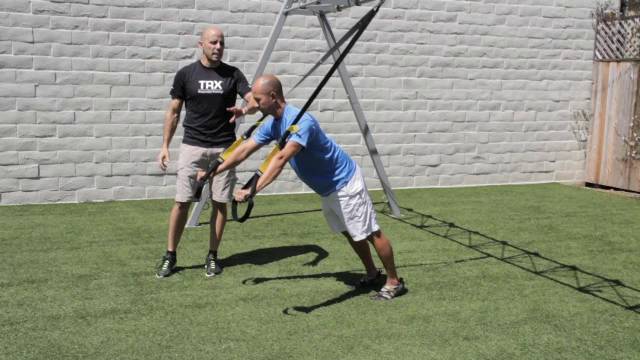
TRX 101: No Scraping
Do the straps of your TRX Suspension Trainer ever rub against your arms and shoulders when you’re doing a TRX Chest Press? Isn’t that annoying?
Here to help you correct the problem is TRX Head of Human Performance Chris Frankel and one of the personal trainers at Park Road Fitness in Burlingame, California.
You may recall the term "scraping" from an earlier blog post on the Six TRX Sins. Want to perfect your TRX form? Take our quick assessment quiz to get personalized technique tips and corrections.
TAKE OUR TRAINING QUIZ
Scraping tends to happen when doing a TRX Chest Press with your hands too low, causing the straps of the Suspension Trainer to rub across your arms and shoulders. This is problematic for two reasons:
When the straps are rubbing across your arms and shoulders, it's uncomfortable and annoying, distracting you from focusing on the movement and getting in a good set.
The more your arms and shoulders rub, the less this move is accomplishing its intended purpose (improving core stability). As you may remember from the stability principle, the more points of contact you have, the easier an exercise is going to be, and the less you will be relying on your core to maintain a plank position.
So, how do you fix it? First, simply move your hands up in relation to your shoulders. Come to the top of the press and move your hands up until the straps are no longer touching your arms and shoulders. Shoot for two to three inches off of your arms. That way, you can get through a full rep without touching.
If after making this adjustment, the straps are still rubbing your arms, try externally rotating your hands, aligning the straps more with the inside of your forearms, instead of rubbing across the top of them. If you try that and find the straps are still rubbing, move your feet farther from the anchor point until you can get more comfortable stabilizing from your core.
Are you experiencing any issues you think might be compromising the effectiveness of your TRX workout? Let us know below.

TRX 10/10/10 Workout Challenge
Designed by TRX Master Trainer Jonathan Ross, this new challenge is advanced and requires many characteristics of fitness to be present all at once. It requires strength, stability, balance, power, coordination and endurance.
Success in fitness is found in developing the various parts of fitness without allowing anyone to dominate to the exclusion of others. This challenge does just that by asking for challenging exercises to be performed with rapid transitions and all exercises requiring full body stability with localized strength and power.
Set up for the TRX 10/10/10 Challenge:
Perform 10 reps of three exercises as a circuit with 10 second transitions between exercises.
Rest for 60 seconds and switch the TRX foot during the rest.
Perform 10 reps of same three exercises with the other leg in TRX.
TRX Suspension Trainer Exercises (all in single handle mode):
TRX Inverted Shoulder Press
TRX Leg Extension
TRX Elevated Lunge
"Intense" TRX Inverted Shoulder PressThis is a challenging frontal plane upper body exercise requiring a combination of shoulder stability, mobility and strength. It is critical to differentiate this movement from a chest press by performing a “vertical push” motion like an overhead dumbbell press.
Criteria:
Torso must be parallel to arms, which are close to vertical.
Range of motion on lowering must bring top of head close to ground.
Training Tips:
Hold the inverted position statically to develop the strength and endurance of the stability in the shoulder. Maintaining the position takes strength initially but holding helps provide “stability endurance” that will be necessary to perform the exercise.
Next, work on strength and mobility by dropping the free foot to the floor and perform the shoulder press movement, keeping the torso parallel to the arms.
"Extreme" TRX Leg ExtensionRoss created this variation of a TRX Leg Extension to bring even more challenge to the quadriceps muscle for mobility and to the upper body and torso for stability. By having the feet significantly higher than the head, the leg extension must be performed “uphill” and thus the term “extreme”.
Criteria:
Head must be directly under anchor.
Thigh of free leg stays parallel to torso.
Range of motion on knee of TRX leg must be from just above ground to full extension
Training Tips:
From the standard leg extension position (feet under anchor), perform a leg extension from an elbow plank position. This lowers the upper body and provides more stability from the ground while creating more of an “uphill” push on the TRX leg.
Move head closer to anchor and perform the exercise from an elbow plank position, then progress to a hand plank position. Repeat as necessary to bring head under anchor.
"Explosive" TRX Elevated LungeThis is a classic TRX exercise performed with power, balance and coordination.
Criteria:
TRX foot must be directly under or in front of anchor.
Ground foot must completely leave the ground on each rep.
Training Tips:
Perform an elevated lunge slow and controlled with the foot, knees and hips aligned. At first, use little to no arm movement.
Gradually introduce arm movement in a gait-like pattern with the arms and legs moving in opposition. (i.e., when your ground leg is bent at the bottom position, your opposite arm is in front.)
Next, perform the exercise more rapidly progressing to where your heel gets light and lifts slightly, but the toes stay down. The next step is lift off!
What are you waiting for? Grab your TRX and get started. You’ve got all weekend to practice this one. And of course, if you feel you’ve earned bragging rights, share your score below. And be sure to challenge your friends to the TRX 10/10/10 Challenge.
Jonathan Ross, ACE Personal Trainer of the Year, Discovery Health Fitness Expert, TRX Master Trainer and creator of the TRX Super Hero workout, brings a fresh perspective on fitness to the industry (www.AionFitness.com). His personal experiences help him to create exercise strategies that deliver big results for clients.
